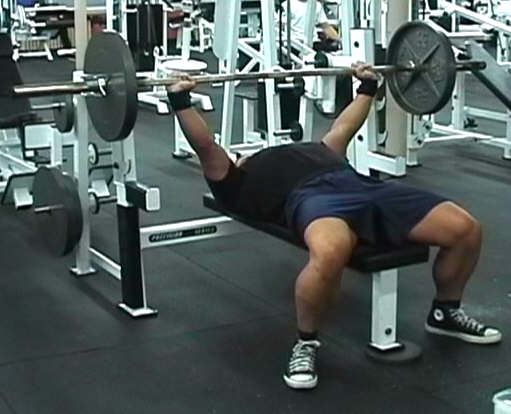Friday, June 29, 2012
Effect of Paired Sets on Volume Load and Efficiency
The Effect of an Upper-Body Agonist-Antagonist Resistance Training Protocol on Volume Load and Efficiency
by Robbins, Young, and Behm (2010)
The objective of this study was to investigate the acute effects on volume load (VL) (load X repetitions) of performing paired sets (PS) vs. traditional set ((TS) training over 3 consecutive sets. After a familiarization session 16 trained men with several years of training experience performed 2 testing protocols using 4 repetition maximum loads:
TS - 3 sets of bench pull followed by 3 sets of bench press performed in approximately 10 minutes, or
PS - 3 sets of bench pull and 3 sets of bench press performed in an alternating manner in approximately 10 minutes.
Bench pull and bench press volume load decreased significantly from set 1 to set 2 and from set 2 to set 3 under both the TS and PS conditions. Bench pull and bench press volume load per set were significantly less under traditional sets as compared to paired sets over all sets, with the exception of the first bench pull and bench press. Session totals for bench pull and bench press volume load were significantly less under traditional sets as compared to paired sets.
Paired sets were determined to be more efficient (Volume Load/Time) as compared to traditional sets. The data suggests that a 2-minute rest interval between traditional sets, or a 4-minute rest interval between paired sets may not be adequate to maintain volume load. The data furthers suggests that that paired set training may be more effective than traditional set training in terms of volume load maintenance and more efficient. Paired set training would appear to be an efficient method of exercise. Practitioners wishing to maximize work completed per unit of time may be well advised to consider paired set training.
Because of the nature of paired set training, coactivation (the concurrent activation of agonist and antagonist muscles) should be considered. Muscle activity is partially dependent on contractile history, and it is therefore possible, although perhaps unlikely, that the mechanisms associated with coactivation played a role in the attainment of greater volume load observed under the paired set protocol. It has been suggested that preloading may alter the braking phase of the triphasic pattern of the previously loaded musculature when acting as an antagonist during subsequent power exercise (triphasic or ‘‘ABC’’ pattern: This pattern is characterized by a large action burst of activity by the agonist musculature followed by a shorter braking burst of activity by the antagonist musculature of th limb and finally a short clamping burst again by the agonist muscles to complete the movement.) . See here:
http://svc066.wic026v.server-web.com/downloads/ft700docs/BakerNewtonMBUpage1pdf.pdf
However, the triphasic pattern is associated with ballistic movement and is unlikely to have been a factor in protocols that used 4-rep maximum loads. It is possible that fatigue associated with coactivation influenced results. That is, activation of the musculature when acting in an antagonistic manner resulted in fatigue, which negatively influenced performance of that musculature when acting as an agonist.
Applications
Under designations such as "super sets," "compound sets," "contrast sets," and others, paired set-type training has been prescribed by practitioners for years. Incorporation of paired set-type modalities into training programs is commonly performed as a time-saving measure. However, scientific research investigating paired set-type methods in terms of time efficiency is limited.
Given similar timelines, it would appear that performing agonist and antagonist work in an alternating manner allows for greater recovery and subsequently greater total loading. More complete physiological recovery will allow higher volumes of work to be performed.
When tracking performance measures over a training cycle, practitioners should be cognizant of the order in which the exercises have been performed in each session. Also, it would appear that the musculature involved in pulling movements may be more fatigue-resistant than that involved in pushing movements. If this proves to be the case, practitioners may wish to account for this when prescribing pushing and pulling exercises.
Predictions regarding the chronic effects of paired set training would be speculative at this time. However, it is very possible that paired set-type protocols are an effective and efficient method for developing strength.
Subscribe to:
Post Comments (Atom)



No comments:
Post a Comment